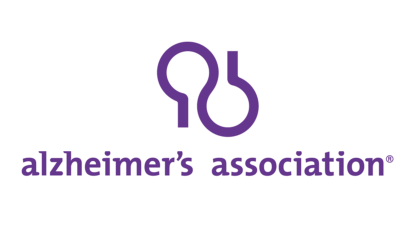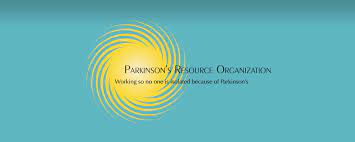The cost of Assisted Living Facilities in California can vary from $3,000 – $10,000 per month. The statewide average as of 2018 was $4,070/month. Sometimes people have a false sense of security about what their insurance will pay. It’s important to know right up front that Medicare will not pay for assisted living. But, don’t get discouraged. There are some other options you can investigate.
You may be able to navigate some of these options yourself. Some senior living communities offer a “financial concierge service” that may be able to help guide you through the process of qualifying for financial benefits. Another option is to speak with a “geriatric planner”. They can save you a lot of time and have a wealth of knowledge in this area. However, if you cannot afford or cannot find a geriatric planner, with a little determination and perseverance you can achieve the same results. Here are the most common ways people pay for Assisted Living. Let’s check them out.
Long Term Care Insurance
If you have a Long-Term Care insurance policy, it should cover assisted living as well. If your policy is designated for home care, you should be able to use it for assisted living too. There are also “facility-only” policies that cover care only in a licensed assisted living or skilled nursing facility.
Most insurance policies are difficult to understand. It’s important to know what your benefits are so you can ensure you get what you’ve paid for. It is common for insurance companies to decline payment on the first go round. But, don’t let this deter. Many times you, or an advocate at the assisted living facility, will need to contact the insurance company and discuss these issues in order to get approval. Most insurance companies required that you need help with at least two ADL’s (Activities of Daily Living) such as bathing, eating, dressing, transferring from bed to chair, walking, and toileting.
Long Term Care insurance plans and their respective benefits vary widely depending on the policy. Benefits can range from $1,500 to more than $9,000 per month.

Life Insurance
Most people think of life insurance as funds that are not available until after the person’s death. But a life insurance policy can provide financial support now if you need funds. There are several ways that your policy may be used to pay for care while the person is still alive. Ask your Life Insurance Agent about cashing out the policy. They are often referred to as accelerated or living benefits. Typically a company will purchase the policy back for 50 to 75 percent of its value. The rules will be different depending on the company and type of policy. Some policies can only be cashed in if the policyholder is terminally ill while others are much more flexible.
If the company won’t let you cash it in, you may be able to sell the policy to a third-party company in return for a “life settlement” or “senior settlement”. In this case you can typically expect to receive 50 to 75 percent of the policy’s face value. The third party company will continue to pay the premiums until the policyholder dies at which tie the company received the benefits.
There are also options called “life assurance” benefits or life insurance conversion programs. These will allow seniors to switch the life insurance policy into long-term care payments. Life insurance conversion typically pays between 15 and 50 percent of the value of the policy. Although this is less than a life settlement, it is an option for lesser-value policies that might not qualify for life settlement.
Veterans Benefits
The VA (Veteran’s Administration) can be very generous when taking care of those who served. If you or your loved one is a veteran, you may be eligible for benefits that can be used to pay for residential care. These benefits are known as Aid and Attendance benefits.
Aid and Attendance benefits are available to veterans, and/or their surviving spouse, who are disabled and whose income is below a certain limit. A veteran must have served at least 90 days on active duty and/or at least one day during wartime (a period of active conflict). The medical condition doesn’t need to be related to your service but you must meet medical qualifications. The average maximum benefit is typically $1,949 a month for married veterans, $1,644 for single veterans and $1,056 for a surviving spouse.
If you are told that you have too many assets to qualify for this program, you may be able to make some re-allocations or adjustments to your assets without being penalized. Anytime a person tries to “safeguard” their finances or assets, it can be quite tricky. You must make absolutely sure that doing this does not affect eligibility. Ask questions more than once to make sure you understand what to do.
In order to qualify, you will need to apply through the Veteran’s Administration. In addition to your military discharge papers, you will need to provide a letter from your doctor indicating a valid medical condition that makes you appropriate for assisted living.
Consider Selling or Renting Your Home
If you own your home and nobody needs to remain in the home, this can be a valuable resource. Selling a family home is a difficult decision for many people to make and some aren’t quite ready to take that step right away. If that’s the case, consider renting the home which will give you a monthly income that could cover the cost of assisted living.
Reverse Mortgage
If you own your own home and your spouse still needs a place to live, a reverse mortgage might be just the option for you. A reverse mortgage allows you to borrow money on the equity you have built up in your home. Then, when the last person is gone from the home, the money needs to be repaid which usually means selling the home. As with any major financial decision, make sure you do your homework and understand what you are getting in to. It is a viable option for many but not for everyone.
Bridge Loan
If you have trouble liquidating assets quickly, a short term loan may be able to help bridge the gap. These loans are typically available up to $50,000 and designed to fund the move to an assisted living facility. They are usually used while waiting for the sale of a property or while waiting to be approved for a pension.
Private Pay
Personal income or savings is the simplest route to pay for assisted living, but the cost can quickly deplete your savings. If you have investment portfolios such as a 401k or an IRA, you may want to consider cashing in on those. Often paying out-of-pocket is beyond what many can afford for very long. However, when all your resources have been exhausted, you can apply for Medicaid.
Annuity
If you have a sizable savings but are worried about outliving your resources, you may wish to consider an annuity. With an annuity, you pay a lump sum to an underwriter and then you receive regular payments over a specified period (usually for the rest of your life).
This is one way you can stretch out your money and make sure that you will always have some money coming in even if you live longer than expected. The benefit of an annuity is that you may bet back more money than you put in. The underwriters hope to make a profit off you if you die early. They take the risk that you could live longer. It can be more beneficial for you than just spending your money on the cost of the stay. Annuities can be complex so always consult with a financial adviser to assist you.
Conclusion
I hope this has given you some options to consider when deciding how to pay for assisted living. If you have any questions, please feel free to contact me. If I can’t answer your question I can put you in touch with the right resource who can.





